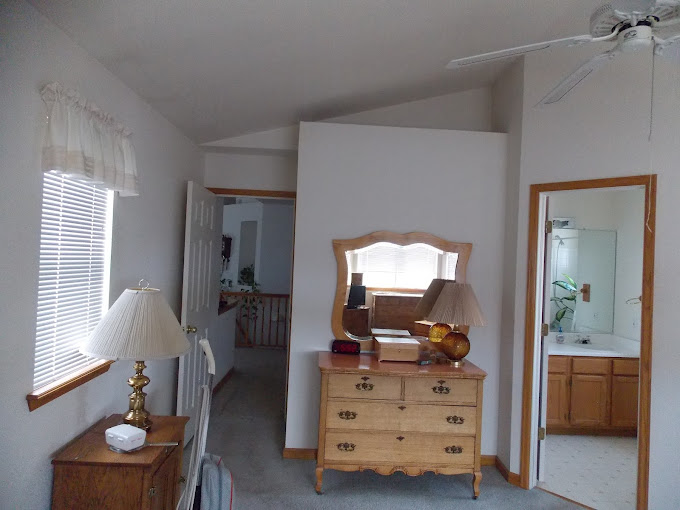A well-painted banister can completely transform your staircase, adding a fresh, polished look to your home’s interior. Whether you’re updating an outdated finish or adding a pop of color, the right techniques and materials ensure a long-lasting, high-quality result. Homeowners in Denver, CO, often look for durable and stylish painting solutions that can withstand the region’s climate and indoor traffic. A professional approach to banister painting not only enhances aesthetics but also extends the lifespan of your staircase.
Key Takeaway:
A beautifully painted banister elevates your home’s interior while providing protection against daily wear and tear. Using proper techniques, high-quality materials, and expert craftsmanship ensures an exceptional finish.
Choosing the Right Paint and Finish
Understanding Paint Types for Banisters
Different paints serve unique purposes, and selecting the best option is crucial for a flawless staircase finish. Oil-based paints offer durability and a smooth finish but take longer to dry. Latex paints dry faster and emit fewer fumes, making them a popular choice for indoor projects. For a professional look, many homeowners opt for semi-gloss or high-gloss finishes, which provide excellent resistance to scuffs and easy cleaning.
Selecting the Perfect Color
Color choice plays a significant role in home painting. While white or neutral shades create a timeless appeal, darker colors like black or deep brown offer a bold, elegant contrast. Many Denver homeowners prefer classic tones to complement their interior painting projects. Matching the banister color with nearby kitchen cabinet refurnishing or wallpaper install can unify the space.
Staining vs. Painting
If you want to maintain the natural beauty of wood, hand rail staining is an excellent option. Stains penetrate the wood grain, preserving its natural texture, whereas paint provides a solid, uniform color. Staining offers a more traditional aesthetic, blending well with hardwood floors and wooden stair treads.
Preparing Your Banister for Painting
Cleaning and Sanding
Proper preparation ensures smooth application and long-lasting results. First, clean the banister thoroughly to remove dirt, grease, and residue. Use a gentle detergent or degreaser for optimal cleaning. After drying, sanding is essential to create a smooth surface and promote adhesion. Start with medium-grit sandpaper and finish with fine-grit for an ultra-smooth surface.
Repairing Imperfections
Before painting, inspect the banister for any cracks, dents, or nail holes. Fill imperfections with wood filler and allow it to dry completely before sanding. If the staircase includes drywall or plaster elements, consider drywall repair to ensure a seamless look.
Applying Primer
A high-quality primer enhances paint adhesion and prevents stains from seeping through. Oil-based primers work best on wooden surfaces, while water-based primers suit lighter applications. A primer also provides an even base coat, ensuring better paint coverage and longevity.
Application Techniques for a Professional Finish
Using the Right Tools
For best results, use high-quality brushes and foam rollers. A small-angle brush helps with detailed areas, while a foam roller ensures a streak-free finish on flat surfaces. Investing in professional-grade tools minimizes brush marks and enhances the final appearance.
Layering and Drying
Apply paint in thin, even layers to avoid drips. Let each coat dry fully before adding another layer to build an even and durable finish. Depending on the paint type, drying times can vary—oil-based paints require longer curing times, while latex dries faster.
Sealing and Protecting the Finish
Once the final coat has dried, a protective topcoat enhances durability. A clear polyurethane sealant adds resistance to scratches, scuffs, and everyday wear. For banisters that endure heavy traffic, an extra coat of sealant ensures longevity.
Answering Common Questions
How long does banister painting take? The timeline depends on preparation, drying time, and number of coats. Generally, a banister painting project takes 2–3 days, including priming, painting, and sealing.
What is the best paint for a staircase banister? Semi-gloss or high-gloss latex paint is ideal for durability and easy maintenance. Oil-based paints also provide a smooth, long-lasting finish.
Can I stain my banister instead of painting? Yes, stair refinishing with stain highlights the natural beauty of wood. Staining is an excellent option for those who prefer a more organic look.
Enhancing Your Staircase with Additional Upgrades
Incorporating Lime Wash for Texture
For a unique and textured look, lime wash offers a rustic appeal. This technique works well in traditional or farmhouse-style interiors and pairs beautifully with wood finishes.
Wallpaper and Texturing Options
To complement a freshly painted banister, consider wallpaper install on the adjacent staircase wall. Wallpaper adds dimension, while texturing techniques, such as faux finishes, create depth and character.
Deck and Fence Enhancements
If you’re updating your interior staircase, why not refresh your outdoor spaces as well? Deck painting, deck staining, and fence painting ensure a cohesive look throughout your home. Proper deck refinishing and fence staining enhance durability and aesthetics, tying together your exterior and interior design elements.
Final Thoughts
Upgrading your staircase with a fresh banister painting project adds elegance and value to your home. Whether opting for hand rail staining or a sleek painted finish, following professional techniques ensures exceptional results. If you’re in Denver, CO, and need expert assistance, Dream Painting LLC specializes in home painting, cabinet painting, and commercial painting services. Contact us today to bring your vision to life!

